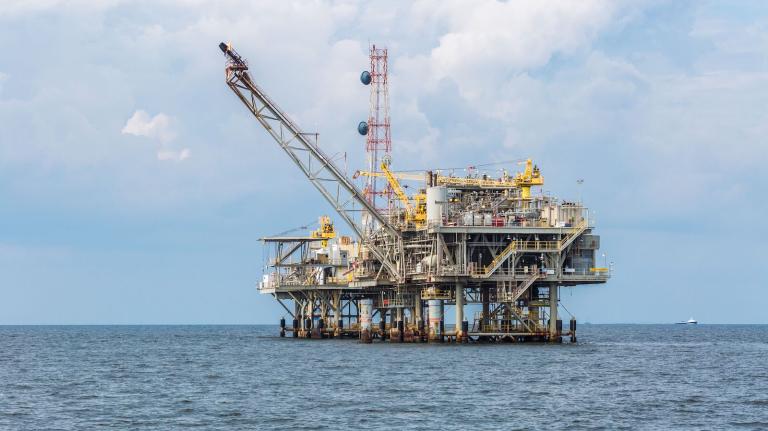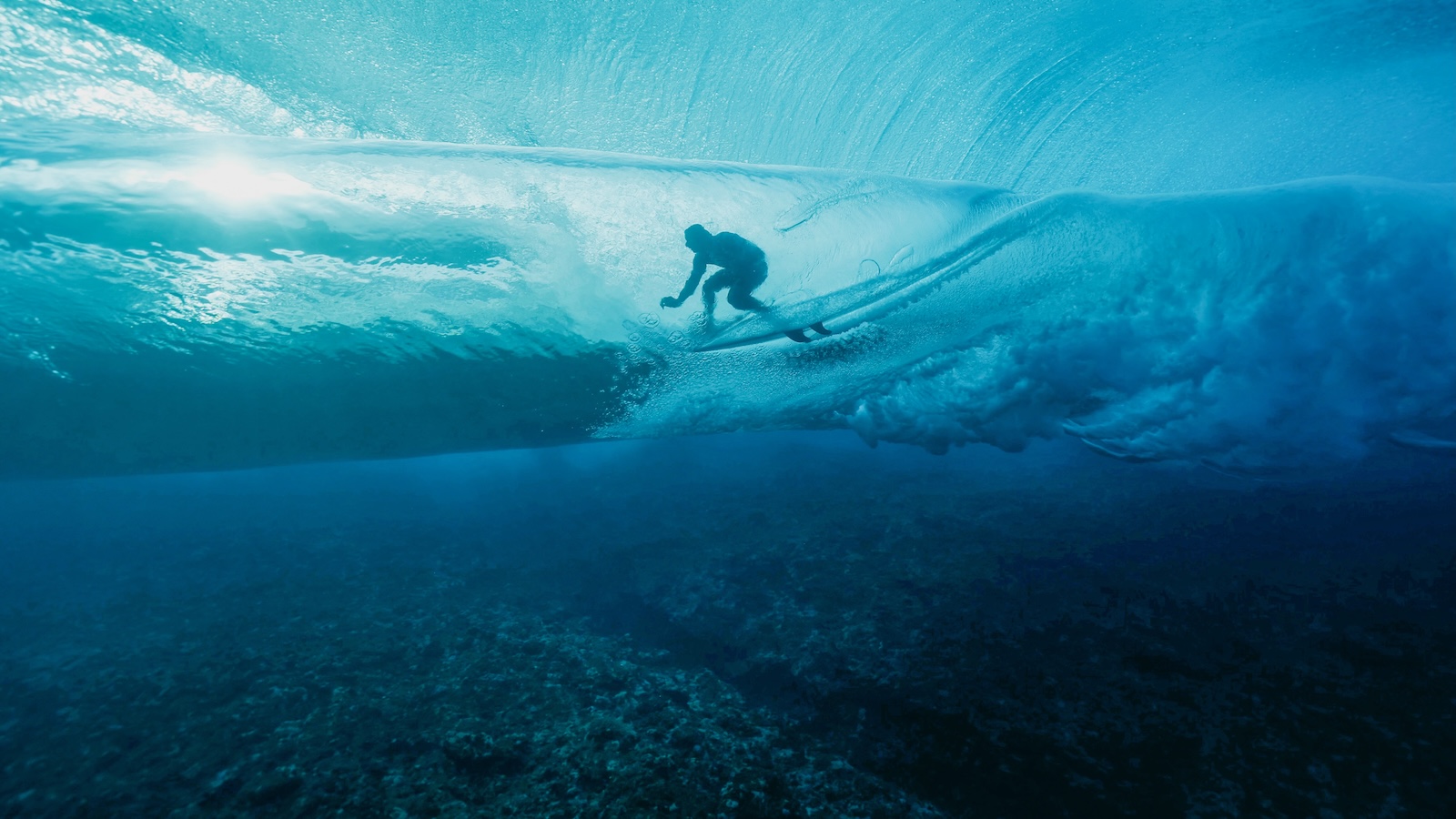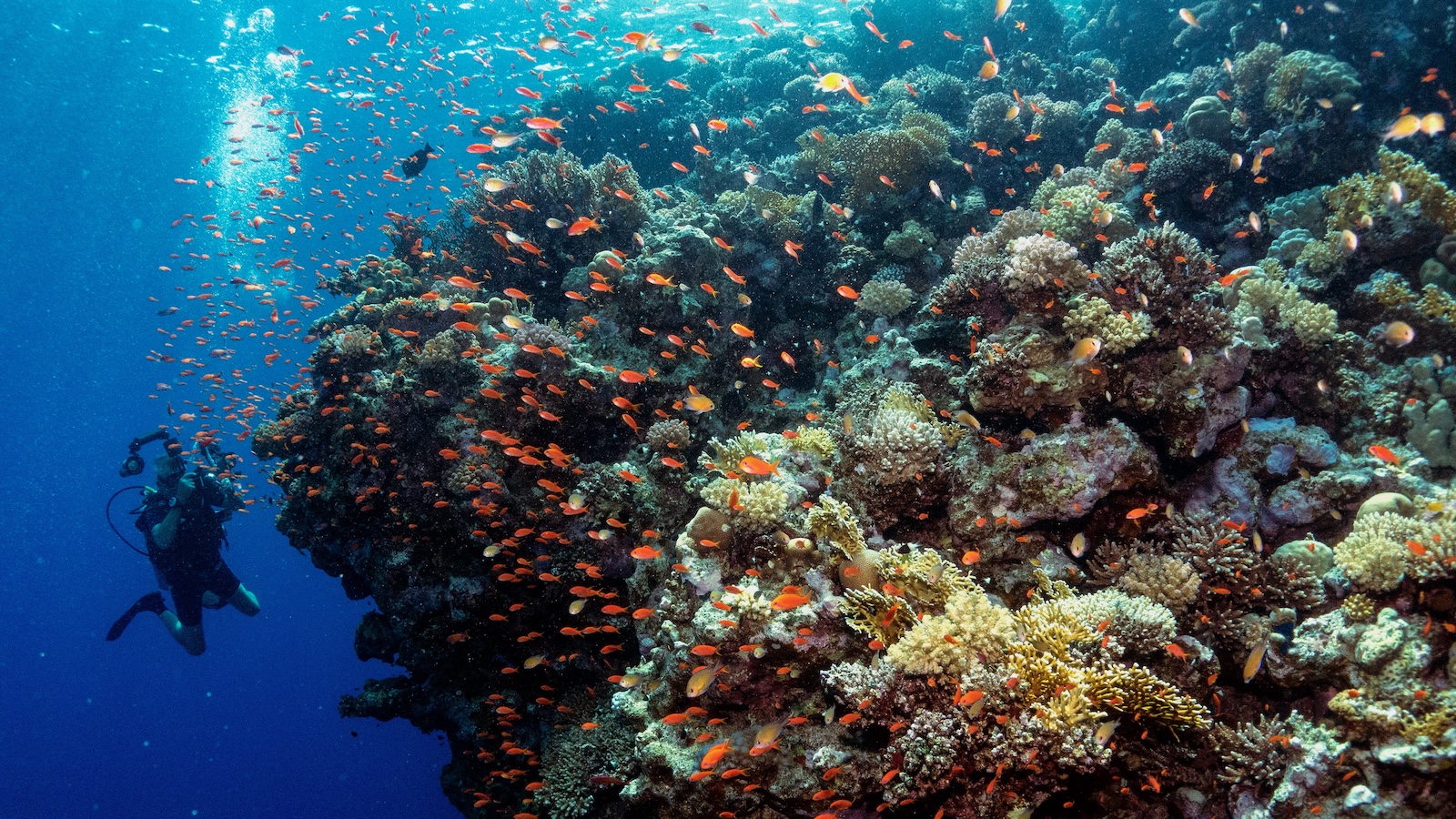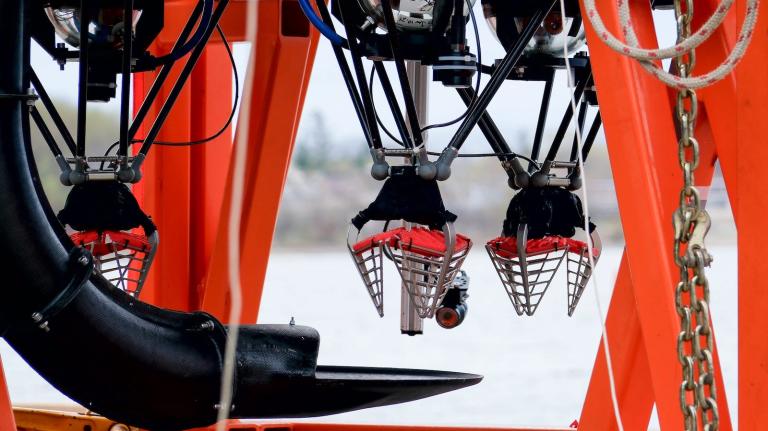Vibrant shades of green merge with brilliant streaks of blue where the land meets the sea on Rao Island, which sits just west of Morotai in the northeastern corner of the Indonesian archipelago. Fishing boats bob in the bay, and children perched on the colorful hulls laugh as their bare feet dangle in the water. Some of them leap playfully into the waves.
The island lies in a region recently declared a surf-protected area, a legal designation that preserves the surf break just offshore and the ecosystems that surround it. On the beach, shaded by palm trees and against the rhythmic crash of the ocean rolling ashore, youngsters from seven nearby villages attending surf camp are learning to safeguard this ecological treasure, both for the sake of a sport they love and as a lifeline to their culture, their community’s livelihood, and the planet.
Coastlines around the world are marked by surf breaks — places where a reef, sandbar, rocky outcropping, or other feature causes the water to crest, giving a wave its curl. Rising and warming seas, coastal erosion, and development threaten this delicate cadence of forces, with grave implications for surfing. A 2017 analysis of the California coastline found 34 percent of the state’s breaks could be lost to climate change by 2100. This global risk has alarmed surfers and mobilized organizations like Conservation International and the Save the Waves coalition to protect breaks worldwide.
Doing so requires protecting the ecosystems around them, which in turn defends coastlines against erosion, minimizes storm surges, and supports marine life. It also mitigates climate change.
Research published last fall by a team of surfer-scientists revealed that the mangroves, seagrass beds, and other habitats within 1 kilometer (0.6 mile) of the world’s surf breaks hold 88.3 million metric tons of carbon worldwide. Five countries — the United States, Australia, Indonesia, Brazil, and Panama — account for nearly half of that. Expand that radius to 2 miles and the amount of sequestered carbon nearly doubles.
“It was pretty astounding to find out that if we could effectively protect the breaks of the world with their surrounding ecosystems, we could have a significant role in sustaining that stored carbon,” said Scott Atkinson, one of the authors of the paper and senior director of surf conservation at Conservation International. “It starts to be a real significant number in terms of relative carbon emissions every year.”
The finding builds on a study, published in 2021, that showed 25 percent of the world’s surf breaks lie within 3 miles of an area deemed crucial to maintaining the planet’s biodiversity. Yet nearly two-thirds of them lack formal protection against development and other threats, which imperils these carbon stores.
A growing number of surf-protected areas, or SPAs, are bringing some level of conservation to these habitats. The work that Atkinson and his colleagues published in Conservation Science and Practice provides a framework for aligning such efforts with climate goals. They urge conservationists, policymakers, and the surfing community to work with local communities to protect these carbon sinks.
“If we lose this carbon, it would be impossible to get it back within the next couple of decades,” said Marissa Miller, another contributor to the paper, a colleague of Atkinson’s at Conservation International, and a professional surfer.
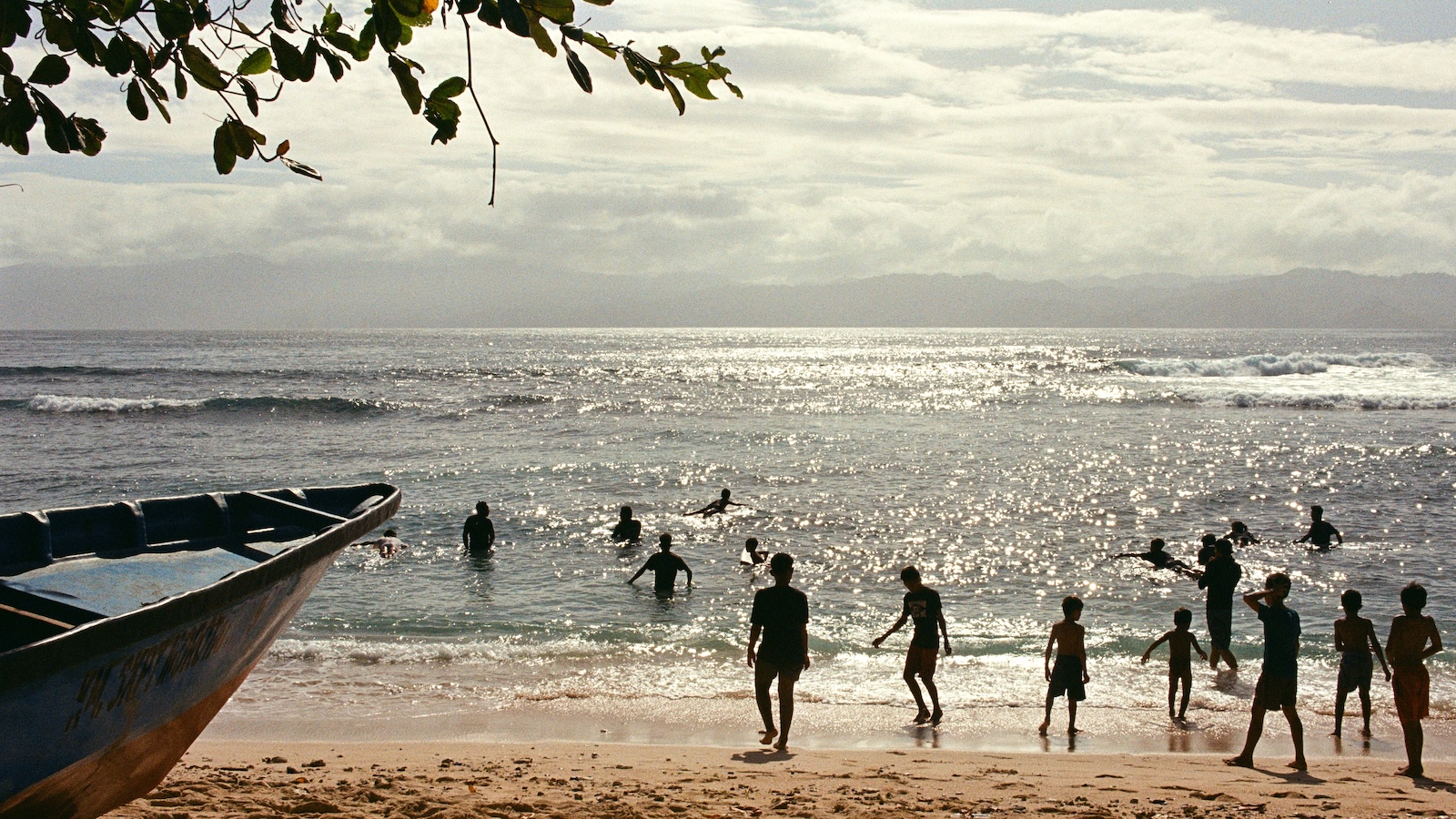
Conservation International and Save the Waves have collaborated with authorities and local communities in Indonesia, Peru, and Costa Rica to establish 30 surf-protected areas. Of those, 23 are in Indonesia and cover 148,000 acres, an area roughly half the size of Los Angeles. They’d like to see such efforts, which started in 2019, expand, and they hope to establish another 20 SPAs this year.
In Morotai, locals work with Save the Waves to combine surf protection with sustainable fishing practices and eco-friendly tourism. The Morotai Surf Conservation Camp that drew so many children on Rao Island in March serves as an educational hub to raise awareness of these efforts and stress the link between environmental stewardship and economic benefits.
Surf tourism, valued at up to $65 billion annually, brings livelihoods to coastal communities, but carries with it a latent threat: Without protection, the development that often accompanies the industry risks degrading the very ecosystems that sustain these areas and the people who live there. Nearly 20 percent of the carbon stored in surf ecosystems lies within areas that have no formal protection, vulnerable to development and the impacts of climate change. Smaller coastal island communities often feel these threats most intensely. By helping develop surf-protected areas, surf tourism can advance conservation rather than degradation.
Experienced surfers understand the damage that can occur when a spot suddenly becomes popular. “If there’s no plan in place to protect the local community, environment, or culture, there can very quickly become issues with overdevelopment and overcrowding that lead to a lot of other problems,” she said. “But it doesn’t have to be that way, and fortunately, in most places, it’s not too late.”
The surfers behind the paper also note that their sport has a unique ability to foster connection with place — a bond that, in many parts of the world, has been severed. Surfing provides a way of rekindling a sense of responsibility for natural resources, Miller and others said. Leveraging that can preserve not just waves and biodiversity, but the cultural and economic lifeblood of coastal communities while providing a model for sustainable tourism.
“Our focus is nature for people,” Miller said. “It’s not just about creating a protected area, but it’s about how we can make it last. Our strategy for making it last is ensuring that local people are benefiting from it, that sustainable livelihoods are connected to it, and ensuring that we have sustainable financing mechanisms so that these protections have the resources to be continued.”
Clifford Kapono, a professional surfer, chemist, and molecular bioscientist at the Multi-scale Environmental Graphical Analysis Lab in Hilo, Hawai’i, has spent the last few years working with his team to map coral reefs beneath iconic surf breaks, in a similar effort to protect waves and the ecosystems below them. Less than 20 percent of the ocean floor is mapped, a critical gap in efforts to understand and protect marine environments.
“How are we supposed to look after something when we don’t even know what it looks like?” he said. “Without an indication of what you have, it’s hard to know what to strive for and how to help.”
Their bathymetric data highlights the economic and ecological value of reefs, showing that the most complex formations not only protect shorelines, prevent erosion, and store carbon, but often produce the best waves. Yet their significance extends beyond their ecological roles. “In Hawaiian culture, coral is respected and revered as an ancestor and elder,” says Kapono, a Native Hawaiian. “They’re a keystone entity for planetary stability and, in a way, our biggest ally.”
Protecting these vital ecosystems is not just a duty to nature, he and others said, but a responsibility to heritage and humanity. “We as surfers are so connected to the ocean and these coastal environments, it’s more than our favorite playground,” Miller said. “We’re obligated to give back and take care of these places that have given us all so much.”
